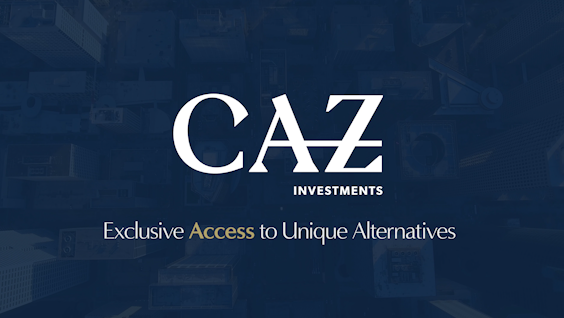Real Estate
Discover how investors approach the world's largest asset
"Buy land, they aren't making it anymore."Explore our funds— Mark Twain
Strategy Overview
(The following contains excerpts from The Holy Grail of Investing, co-authored by CAZ Investments founder, Christopher Zook)
Real estate is the undisputed behemoth of alternative investments and is the oldest and largest asset class. It is likely a part of most portfolios whether it be a residential home, investment properties, or both. While real estate has enjoyed over a decade of steady appreciation, the rapid rise in interest rates has upended many aspects of the real estate market, setting the stage for opportunities to take advantage of the dislocations.
Commercial Real Estate
On January 8th of 2024, the Wall Street Journal reported that office vacancy in America has hit a record high, the highest since 1979. Real estate firm Cushman and Wakefield reported that “as much as 330 million square feet of U.S. office space could become vacant and unused by 2030 due to remote and hybrid work. When added to another 740 million square feet of space that will become vacant from ‘natural’ causes, the total is around 1 billion square feet of unused office space building up over the next seven years.”
In decades past, we would look at commercial real estate through a standard economic lens. Real estate cycles typically coincided with the overall economy: A recession meant fewer jobs; fewer jobs meant less occupied office space; fewer jobs also meant less spending on shopping (retail) and less travel (hospitality). Historically, these downturns have predictably given way to a recovery and a new cycle begins. These traditional cycles will likely continue in a broad sense, but there are some new “post-pandemic” risks we must incorporate into our typical understanding of real estate cycles…
Obsolescence Risk
During the pandemic, we all discovered that Zoom was pretty darn effective for keeping some companies running with remote employees. Many of those companies quickly did the math and realized that remote workers could create huge cost savings by reducing the need for expensive office space. Hence, the recent phenomenon of empty urban skyscrapers dubbed “Zombie Towers.” This new dynamic of remote or hybrid work has also created what some experts are calling obsolescence risk. Commercial real estate buyers must ask themselves if the property they want to purchase is still viable.
And beyond that, if it will be viable in ten years or fifteen years or twenty. Are traditional office buildings becoming obsolete? Will Artificial Intelligence eliminate a percentage of white collar office jobs? If so, will the surrounding retail and restaurants suffer as collateral damage? How will people choose to live, work, and shop five to ten years from now? These are all important questions when considering the current price dislocations and whether or not something constitutes a “good deal”.
Interest Rates and Unintended Consequences
As we have mentioned, we’ve just lived through the fastest interest rate hike in history. This is going to have some harsh unintended consequences that will ripple through all the various categories of real estate, but none will take it on the chin like commercial real estate. While high vacancy is problematic, it is the trillions in loans on these buildings that could create a banking catastrophe.
There is a fast-approaching debt wall. Approximately $2.5 trillion in commercial real estate loans will mature by 2028, with $1.5 trillion coming due by 2025. Barring some major government intervention, it’s likely that many owners will be unable to refinance, or will be so underwater that it will be best to let the bank foreclose.
Geographic/Political Risk
As remote or hybrid work became a viable option for many, our country experienced a huge wave of internal migration. Large numbers of people fled expensive cities. Not surprisingly, they chose states with lower tax rates, lower costs of living, and higher quality of life.
As remote or hybrid work became a viable option for many, our country experienced a huge wave of internal migration. Large numbers of people fled expensive cities. Not surprisingly, they chose states with lower tax rates, lower costs of living, and higher quality of life.
Highlights
- With 7.9 billion people on earth, residential real estate is naturally the largest asset class with a global value of $258 trillion!
- Between April 2020 and July 2022, more than half a million people left California, taking with them more than $50 billion in total income. New York City lost 468,200 residents, nearly 5.7 percent of its population,* a loss reflected in high vacancy rates.
- Approximately $2.5 trillion in commercial real estate loans will mature by 2028, with $1.5 trillion coming due by 2025.



